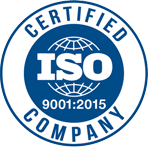Blog
Is It Time To Upgrade Your Industrial Control System?

Upgrades to Industrial Control Systems (ICS) are one of the biggest investments a company can make.
Industry 4.0 offers many new capabilities for ICS which offer high value and ROI, but how can a manufacturer convert their control systems while maintaining uptime, ensuring security and minding cost? Let’s Understand.
When to Upgrade Industrial Control System?
When is the right time to upgrade? It comes down to several factors and greatly depends on a manufacturer’s desire to leverage new technologies as well as the funding they have available – though there are a variety of solutions available now to fit most budgets.
But the maturity of the equipment should be of concern, as should access to parts. As control systems age, there is a greater risk of failure and fatigue at the component level, which results in downtime.
Manufacturers may be hesitant to invest in new technology because they do not fully understand the risk. Leaders are reluctant to move data outside of their current setup.
But prolonged maintenance of control systems can only go so far until repairs get too complex and too costly to do. It raises the risk of longer downtime.
The availability of systems also prevents manufacturers from moving on to upgrades. For example, some companies can only afford one to two hours of scheduled downtime per year and don’t want to have to run two systems at once in order to do an ICS changeout.
This means that while one part of a control system is down, another part can still be running – or the cloud can be used to upgrade certain components on the fly.
Benefits of Upgrading ICS
Mobile access
The advantage of modern control systems is they can connect to automated machines and store reams of data that can be sent to edge or cloud services for analysis, noted Vic Briccardi, president of RTS Consulting – Automation. Using artificial intelligence and machine learning, that data is then used to optimize operations and drive value.
“In the past, systems were very much set it and forget it,” said John Krajewski, senior director of product management, monitoring and control at AVEVA. “Now, control systems are living and breathing – we’re constantly commissioning new things and decommissioning old things.”
Crisis Management
The COVID-19 crisis has put more stress on legacy ICS – particularly those that were not yet connected to the internet or equipped with the capabilities to enable remote access. As workers moved from their usual places of work early in the pandemic, there were restrictions on what they were able to access.
In addition, support for hardware, software and service has been challenging throughout the pandemic, with people working from home, off sick or reluctant to travel, said Briccardi.
Without connectivity, “users of existing and legacy ICS really lacked or had limited visibility and control of production operations,” he said. “Total access to operations, anywhere at any time, is paramount to supporting the operation.”
Plants that had upgraded their PLC, HMI and SCADA systems were much better equipped to pivot for production, for example, critical medical devices and supplies needed in the fight against COVID-19.
Overcome the Limitations of Traditional Data Collection
This approach is enabling more manufacturers to move to a hybrid model, whereby they can bring systems that are not mission-critical fully into Industry 4.0 and leave critical processes alone, tacking on additional connectivity solutions as needed.
Artificial intelligence and machine learning can help operators learn the value of an asset so that you can understand – do I need to replace it, or do I need to maintain it? Can I just continue to let it do its job? Ultimately, the capital expenditure that can be preserved is gold. There may be no reason to have to buy it again or rebuild it.
Briccardi pointed to a recent example when his company worked on a 1960s injection molding machine. Because it was not connected to the internet, it had no metrics or KPIs to indicate its health. The client did not want to move data to the cloud yet but was willing to have an analysis of their on-site data.
With a $600 PLC attached to the machine, Briccardi’s team was “able to strategically pick points to be monitored so that we had visibility into things like cycle time and idle time and mold change over time,” he said.
The company was able to “get definitive numbers on how well the machine was performing compared to the latest and greatest technology machine, which then allowed them to make some strategic Capex decisions on new machines.”
Optimize Performance Using Data
A key feature of modern industrial control systems is the streamlining of data collection so that the data can be contextualized and used to improve performance.
In the past, manufacturers had their devices hardwired throughout a plant – and these systems are still in place at most plants today.
But with wireless networks or connected devices, data can be collected more easily, and used in exciting new ways that move beyond simple HMI graphic representations and into the preventative and predictive and prescriptive analysis.
“One of the biggest limitations we have is our imagination,” said Krajewski. For example, a PLC might not be the best place to obtain the “big picture” information for a certain application.
“If an operator sees falling output pressure on a pump and thinks knows the seal needs to be replaced while asking themselves – when was the last time that seal was maintained? That information is not in the PLCs. Do we have any spares in inventory? That information is not in the PLC.”
Indeed, PLCs are powerful tools that now incorporate office-centric communications protocols like SQL, MQTT and others, which helps with their integration into the Industry 4.0 strategy.
The latest tools for data analysis, which include modelling, digital twins, correlation analysis and statistical process control, can provide ways to optimize production in real-time via artificial intelligence (AI), said Briccardi.
In order to facilitate that analysis, control systems can move the data from machines directly to an on-premise or cloud database for analysis. Ideal performance targets/setpoints/recommendations are then fed back to the edge, either to operations, an operator or directly to the PLC.
That real-time data feedback is paramount to modern-day ICS, said Singh. “Clients are looking for speed. How quickly can I get data?” he said. “From a manufacturer perspective, or from an analyst perspective, if there’s a component failure, you want to know the second of the minute of the day that it happened. So, you need real-time data transmissions.”
Are you Planning to Upgrade your ICS? Here’s what you need to know.
A key part of planning for an upgrade is creating a strategy or roadmap for the future, even if it won’t be used for several years.
Sometimes, direct cost-benefits are not enough to make a project move forward. Initially, your project may not be profitable in itself, but if you consider integrating it into your end game goals, it takes on a lot more value.
To ensure the success of a new controls project, Briccardi advised beginning with a business goal such as improved financial performance or increased productivity, as well as an expected outcome. Identify high-priority initiatives that bring maximum value, then conduct a gap analysis to ensure those goals can be achieved with the technology.
Once an upgrade is underway, steer clear of old ways of thinking. Don’t get caught in the trap of getting a fancy new control system but using the old legacy control philosophy. You become less efficient because you’ve spent a lot of money and your return on investment has been pushed out.
Look beyond the project’s goals to the company’s business goals. Once you’ve mapped out what you want to achieve from a macro level, you will know what makes the most sense for your application.
For all your Industrial Control System requirements, reach us at sales@rtsautomation.com
Reference:
https://www.automationmag.com/roundtable-report-the-state-of-industrial-control/
